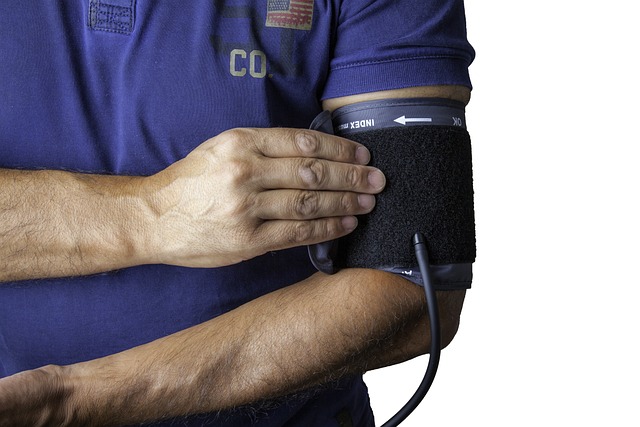Poor posture, muscle imbalances, or structural issues can cause discomfort and injuries. Core strengthening routines targeting abdominals, back, and hips are crucial for correcting misalignments, improving posture, balance, and overall functionality, thus reducing injury risk. Physical therapists use these routines, incorporating exercises like planks and bird dogs, to address alignment problems, enhance stability, coordination, and body awareness, ultimately promoting better postural alignment in daily life through a combination of manual therapy and patient education.
Physical therapy offers a holistic approach to correcting alignment issues, addressing the root causes of discomfort and improving overall well-being. This article explores effective strategies, from understanding the impact of misalignment to practical techniques like core strengthening routines. We delve into targeted exercises tailored for specific problems and integrative methods combining manual therapy with patient education. By implementing these evidence-based practices, individuals can achieve better posture, reduce pain, and enhance their quality of life.
- Understanding Alignment Issues and Their Impact on the Body
- Core Strengthening Routines: A Foundation for Optimal Posture
- Targeted Exercises for Specific Alignment Problems
- Integrative Approaches: Manual Therapy and Patient Education
Understanding Alignment Issues and Their Impact on the Body

Alignment issues can stem from various factors, including poor posture, muscle imbalances, or underlying structural problems. These misalignments can significantly impact an individual’s overall health and well-being. When the body’s natural alignment is compromised, it can lead to a cascade of discomfort and potential injuries. For instance, a misaligned spine may put excessive strain on certain muscles and joints, causing chronic pain and reducing mobility.
Core strengthening routines play a pivotal role in correcting these issues. By targeting specific muscle groups, such as the abdominals, back, and hips, physical therapists can help reestablish proper alignment and stabilise the body. These exercises are designed to improve posture, enhance balance, and promote efficient movement patterns, ultimately reducing the risk of injuries and promoting overall functionality.
Core Strengthening Routines: A Foundation for Optimal Posture

Core Strengthening Routines play a pivotal role in establishing and maintaining optimal posture. The core, comprising muscles in the abdomen, lower back, and hips, serves as the body’s foundation. Weak or imbalanced core muscles can lead to poor posture, with consequences ranging from minor discomfort to severe musculoskeletal issues. By focusing on strengthening these key areas, physical therapists help individuals develop a robust core that supports their spine and aligns their body correctly.
Effective core strengthening routines involve exercises that target the rectus abdominis, obliques, transverse abdominis, and muscles of the back and glutes. These exercises range from simple planks and crunches to more advanced movements like Russian twists and bird dogs. Incorporating these into a regular fitness regimen not only enhances overall strength and stability but also improves balance and coordination, ensuring that the body maintains proper alignment throughout daily activities and even during rest.
Targeted Exercises for Specific Alignment Problems

Physical therapists often prescribe targeted exercises as a key component of correcting alignment issues, focusing on specific muscle groups to achieve optimal results. For example, in cases of spinal misalignment or poor posture, core strengthening routines become essential. Exercises like planks, bridges, and bird dogs target the rectus abdominis, obliques, and spinal erectors, helping to stabilize the spine and improve overall postural alignment.
These exercises are tailored to address specific problems, such as hip misalignment or knee pain. By targeting relevant muscle groups, therapists can correct imbalances that contribute to poor posture and movement efficiency. Core strengthening routines not only enhance stability but also improve coordination and body awareness, enabling individuals to maintain proper alignment throughout their daily activities.
Integrative Approaches: Manual Therapy and Patient Education

Many physical therapy approaches for correcting alignment issues incorporate integrative methods that combine manual therapy and patient education. Manual therapy involves hands-on techniques performed by therapists to improve joint mobility, reduce muscle tension, and enhance overall function. These techniques can include stretching, manipulation, and mobilization strategies tailored to address specific alignment problems.
Patient education plays a crucial role in these integrative approaches. Therapists teach individuals about their condition, the impact of posture and movement on alignment, and practical strategies for self-care. Core strengthening routines are often a key component of this education, as strengthening core muscles supports the spine and promotes better postural alignment. By combining manual therapy and patient education, physical therapists enable individuals to actively participate in their care, fostering long-term improvements in alignment and overall well-being.
Physical therapy offers a comprehensive approach to correcting alignment issues, with techniques like core strengthening routines, targeted exercises, and manual therapy. By addressing these problems, individuals can not only improve their posture but also reduce pain and enhance overall body function. Integrating patient education ensures long-term success in maintaining optimal alignment, making physical therapy a valuable resource for achieving and sustaining a healthy, balanced body.
